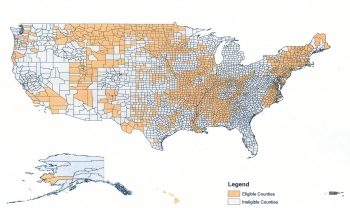Disaster Recovery Funding Available Now for Counties with FY 11 Disaster Declarations
Guest blog by Matt Erskine, Acting Assistant Secretary of Commerce for Economic Development
Applications are now being accepted for investments in regions experiencing severe economic distress as a result of natural disasters that were declared as major federal disasters between October 1, 2010, and September 30, 2011. The U.S. Department of Commerce’s Economic Development Administration (EDA) received an appropriation of $200 million from Congress to address economic recovery challenges in regions impacted by a major disaster.
More than 1,400 counties in 44 states, Puerto Rico, the Virgin Islands, and the District of Columbia are eligible for the federal funding. Successful projects will support long-term economic recovery; demonstrate a clear connection between the project scope of work and the applicable disaster; demonstrate that the project will foster job creation and promote private investment; align with a relevant strategic, economic development, or disaster recovery plan; and demonstrate the incorporation of disaster resiliency. Applications are accepted on a continuing basis and processed as received.



